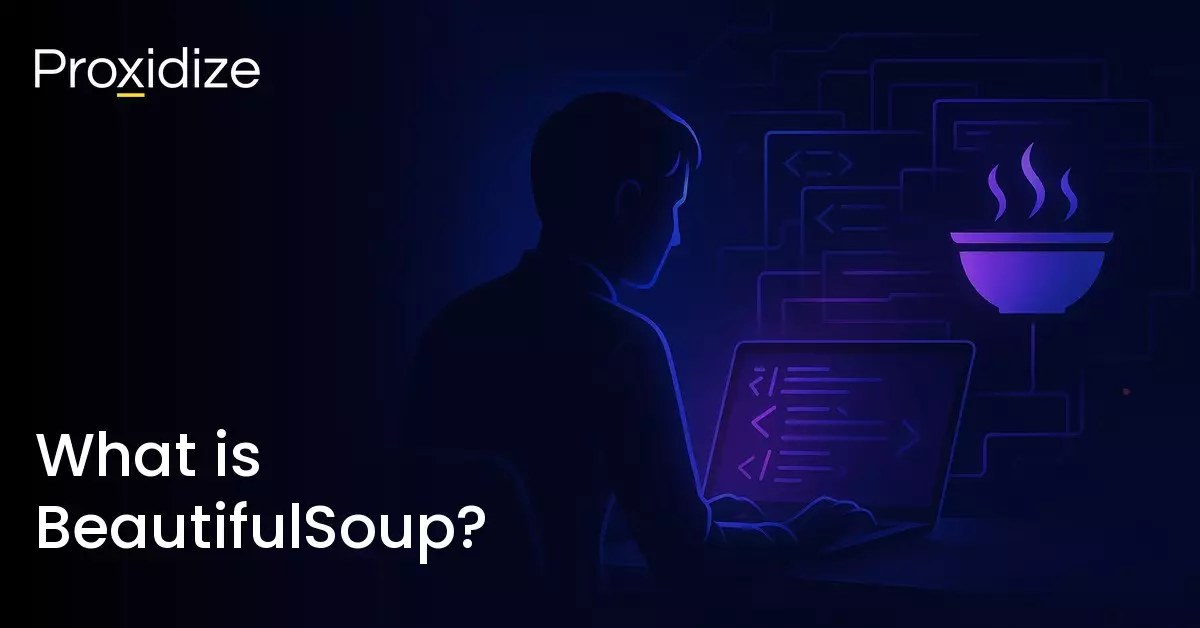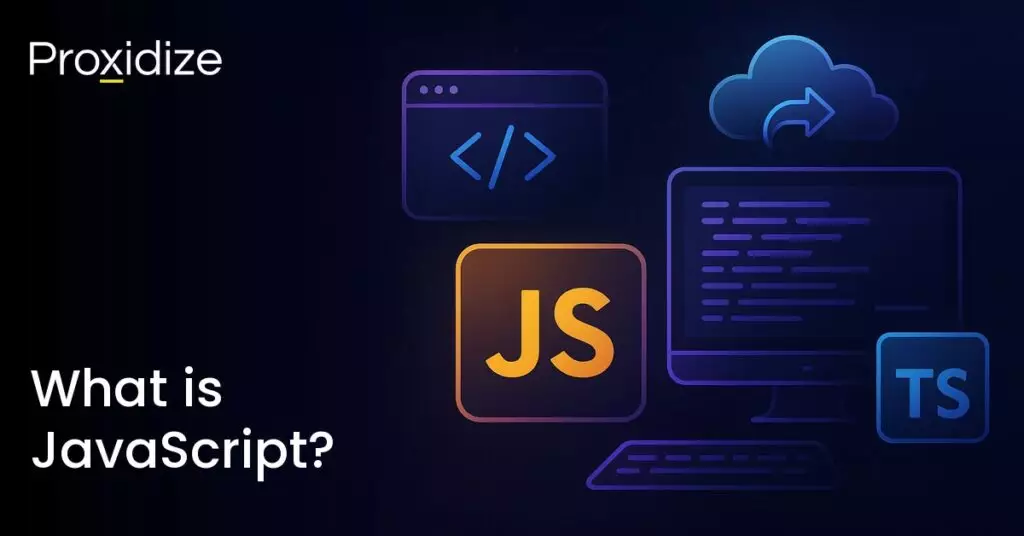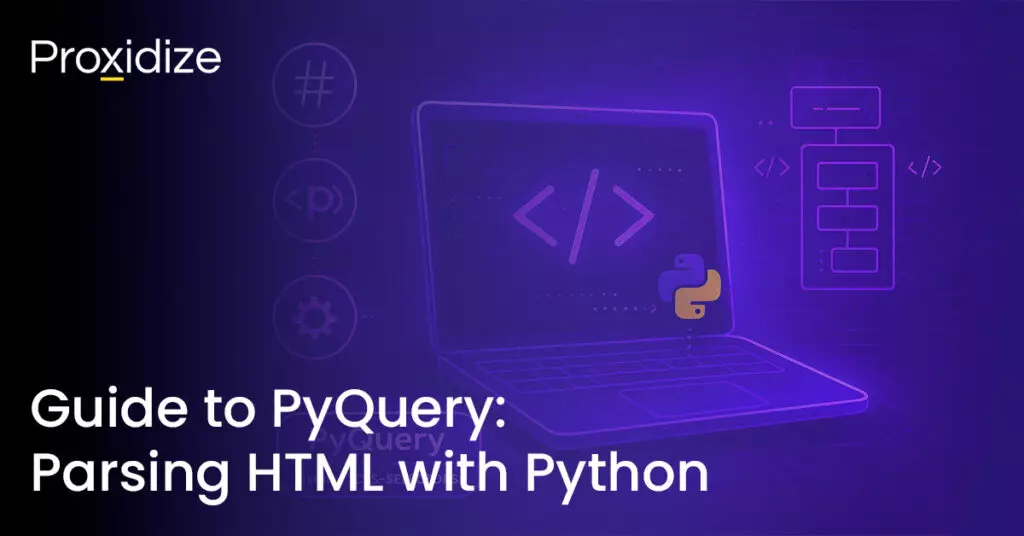Have you ever found yourself sifting through the HTML of a website? It doesn’t matter why you’re doing it, we don’t judge. Trying to click the little ellipses to go one layer deeper into a page only to realize what you’re looking for was actually three layers up and you went down the wrong branch — it’s a frustrating experience. Imagine having to do that for more than a single page, maybe even hundreds or thousands! Madness. A better way must be possible.
There is! BeautifulSoup is a Python library that’s important for every HTML dabbler to learn. It’s simple and easy to understand and even non-programmers can dip their toes into it without too much legwork ahead of time. On top of saving yourself a lot of time, it’s also a great gateway into understanding the basics of programming. This article will talk about some of its uses and features, and provide a simple guide on how to use it.
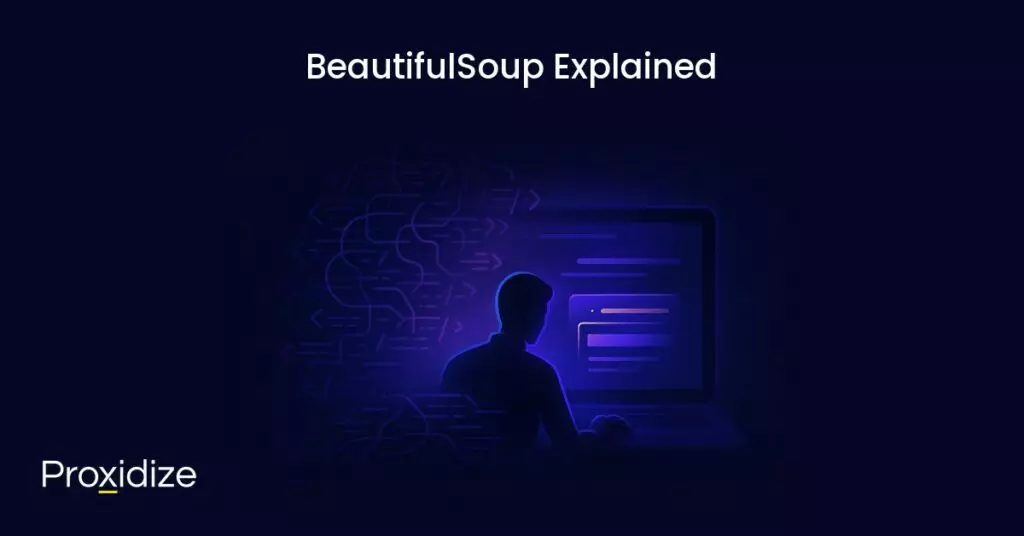
BeautifulSoup Explained
BeautifulSoup was created to solve the issue of sifting though poorly-structured HTML code. It was made in 2004 around the time when the internet was really starting to take off and websites did not have a strict standard to follow. For programmers or hobbyists who wanted to parse or scrape a website that was built on poor code, their options were limited. Beautiful Soup was the solution they were looking for as it is able to parse through all the messy code and gather the bits of information that one might need without having to alter the website itself.
When it was created, BeautifulSoup was written in Python and contained a slew of algorithms to assist with parsing these websites. BeautifulSoup was designed to simplify the process of extracting data from HTML and XML documents, especially when dealing with inconsistent or malformed markup. It provides a flexible interface for navigating, searching, and modifying parse trees, making it ideal for web scraping tasks. It can handle broken tags, missing attributes, and nested elements, allowing developers to focus on parsing and scraping rather than spending countless hours cleaning up the underlying structure. It bridges the gap between raw web data and structured information extraction in Python.
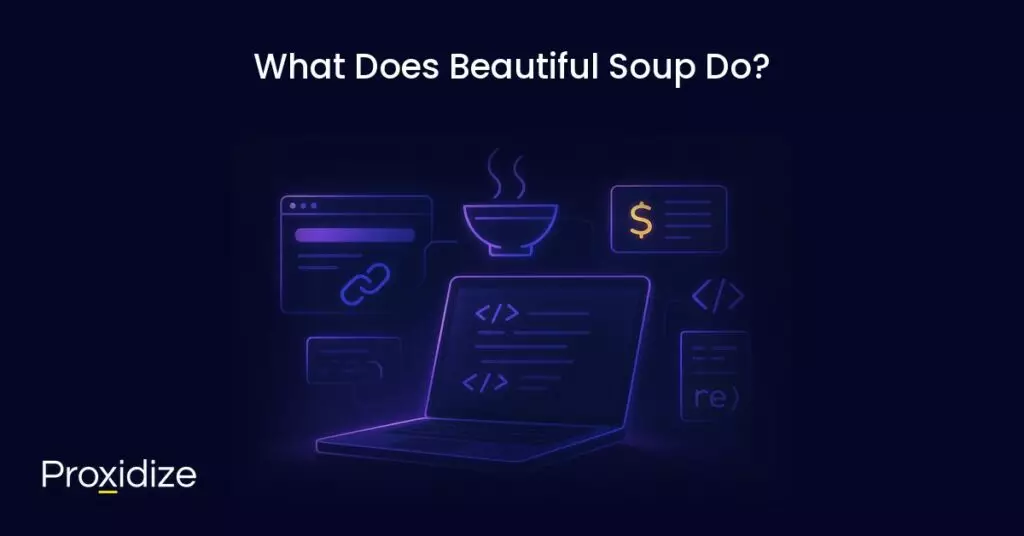
What Does Beautiful Soup Do?
BeautifulSoup helps isolate titles and links from webpages. It extracts all the text from HTML tags and alters the HTML in the document you are working with. When using BS4, you can navigate through HTML and XML documents as well by moving through the parse tree to locate exactly what you need, from headlines to price tags.
It helps with searching for specific elements within a webpage by providing an easy search method by tag, attribute, or text, allowing you more flexibility to pinpoint the data you are looking for. Sometimes, you may need to alter the webpage’s structure to get the data you need. BeautifulSoup will allow you to modify the parse tree, giving you the choice to add, remove, or change elements as needed. BS4 is designed to handle poorly formatted markup, meaning it can still make sense of messy code that might affect other tools.
Beautiful Soup is simple to use as it abstracts many of the complexities involved in parsing HTML, allowing developers to focus on writing minimal code to perform complex tasks. It can help navigate and extract data regardless of if it is well-structured or malformed. BS4 automatically corrects common issues like unclosed tags or improperly nested elements, making parsing and extracting data possible from even broken HTML.
It supports multiple parsing strategies through its integration with different parsers. It has a built-in parser called html.parser which is suitable for simple tasks, but more powerful parsers like lxml can be used for faster speeds and more complex tasks. BS4 can easily integrate with other Python libraries like Requests for downloading web pages, pandas for data manipulation, and re for regular expression-based searching.
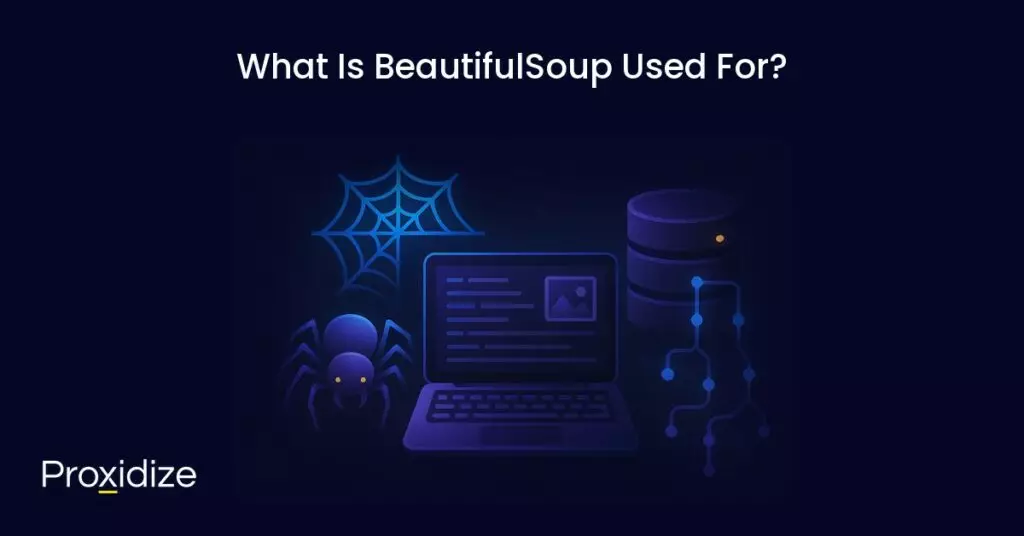
What Is BeautifulSoup Used For?
The library has many use cases, but mostly people do web scraping with BeautifulSoup. You can also parse web pages, scrape images and databases, and even use it for machine learning and automation processes. With the parsing features that make it so well suited to web scraping, you can automate the process of searching for content and make predictions based on the collected data. After setting a parser into motion, you can create a web crawler that continues to return and collect data from your program of choice. This collected data can then be used to create various machine learning models by transferring the data into a new format.
BeautifulSoup can help in everything from document processing to data extraction to reports and automation. Let us explore some more specific use cases for it.
Document Processing
BS4 can help with parsing and extracting information from local HTML files which can come in handy when you need to extract tables from a saved annual financial report. It can help clean and reformat messy or broken HTML markup before reusing it in a CMS or database. If you are checking a set of HTML pages for missing <title> or <meta> tags, it can help inspect your website during an audit. Lastly, it can automate extracting data from tables or lists, saving you countless hours of manual labor.
Data Extraction
On the topic of extracting data, BS4 can process XML-based data formats like RSS or Atom feeds, helping you build a news aggregator by parsing headlines and links from multiple RSS feeds. You can analyze structured information from log files or datasets such as error codes to help you monitor them more easily. You can easily convert semi-structured documents into either CSV or JSON, or even Excel formats. If you find yourself with parsed HTML, you can turn it into a searchable database.
Reports
Automate HTML-based emails, like extracting all unsubscribe links from a batch of newsletters with BS4. Create automated pipelines to generate weekly performance reports and extract metadata from any technical documents.
Research
With BeautifulSoup, you can mine and extract data for academic articles for citation analysis. You can support digital humanities research and build datasets for natural language processing.
Automation
Automation becomes much simpler with BS4 as you can automate tasks such as extracting daily prices from saved HTML pages of a supplier’s catalog so you’re aware of any price changes. You can speed up QA testing by parsing rendered HTML output from an app to verify expected elements are working as they should.
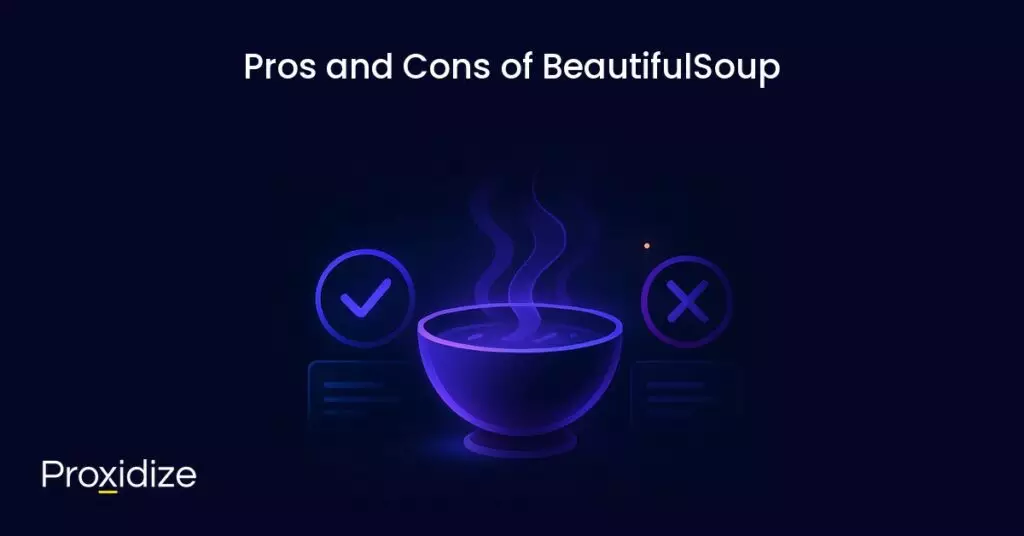
Pros and Cons of BeautifulSoup
While it may seem like the perfect tool to start your journey with, it does hold many pros and cons that make it worthwhile, and also not the best for your specific use case. Let us explore some of these.
What Are the Advantages of Beautifulsoup?
- BS4 is beginner-friendly and easy to learn. It has a simple and intuitive API with clear and widely available documentation.
- It can work well with multiple parsers, including but not limited to html.parser, lxml, and html5lib.
- It supports both HTML and XML and can handle broken or poorly formatted code.
- It provides multiple ways to explore the parse tree through tags, attributes, text, and CSS selectors and is flexible with data extraction methods like text, attributes, parents, siblings, and so on.
- It can modify the DOM tree by adding, removing, or editing tags and attributes.
- Support with different character encodings includes Unicode.
- Works seamlessly with requests and urllib and integrates with pandas for structured data output.
- Works well with Genex, Selenium, Scrapy, and other tools.
- Perfect for parsing HTML and XML documents, and can be useful for cleaning and reformatting inconsistent markup.
- Helpful for automating any repetitive parsing tasks like reports, logs, and email, and can be used for text mining, sentiment analysis, and content analysis.
- Finally, it is a good tool for understanding parsing and DOM-like navigation.
What Are the Disadvantages of Beautifulsoup?
- It is slower than other alternatives, such as lxml.
- It is memory-intensive for larger documents since it loads everything into memory.
- Not practical for real-time or larger-scale processing.
- Has difficulty with executing or interpreting JavaScript.
- Does not have built-in crawling or request handling, meaning you need to install that yourself.
- BS4 lacks browser-level simulation for CSS rendering, DOM events, or AJAX.
- While helpful, the final_all() method can produce overly broad results that need extra filtering.
- Suffers from limited XPath support when compared to other tools.
- It is not updated as frequently as other alternatives.
- Will vary in behavior depending on the underlying parser.
- It is outperformed by lxml when it comes to XML-heavy tasks and by Scrapy for full-featured crawling pipelines.
- Lastly, it requires full browser automation tools to handle JavaScript-heavy sites, which most websites run on.
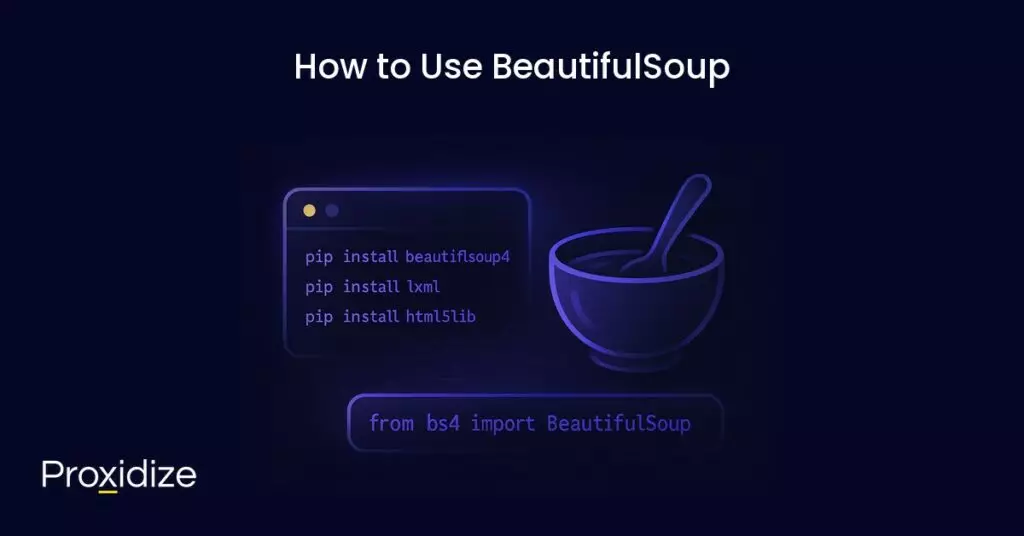
How to Use BeautifulSoup
Installing BeautifulSoup is as simple and straightforward as using it. It comes preinstalled in any Python virtual environment so you do not need to install another program online to access it. The first thing you need to do is open your terminal and enter the following command:
pip install beautifulsoup4For something more advanced such as parsing XML in Python, you may want to look at lxml or html5lib. This can be done by entering the following command:
pip install lxml
pip install html5libAfter installing it, you can start using BS4 by importing it into your scripts by placing this at the start of your script:
from bs4 import BeautifulSoupParsing HTML
The first step to using Beautiful Soup is to parse an HTML document. Typically, this is done by fetching the website’s HTML content using requests:
import requests
from bs4 import BeautfiulSoup
url = "http://example.com"
response = requests.get
html_content = response.content
soup = BeautifulSoup (html_content, "html.parser")Navigating the Parse Tree
You can navigate through the parse tree by accessing different tags. If you wish to find the first h1 tag on a page, use this:
h1_tag = soup.h1 print (h1_tag.text)You can also use final_all to search for all instances of a tag:
all_links = soul.find_all ('a')
for link in all_links: print(link.get('href'))Searching for Elements
By using the parse tree, you can search for items by tag name, attributes, or text content.
- By Tag Name:
title_tag = soup.find(‘title’) print (title_tag.text) - By Attribute:
link = soup.find(‘a’, href=’/example’) print (link.text) - By Text:
paragraph = soup.find(‘p’, text=’Specific Text’) print (paragraph)
Modifying the Parse Tree
You can also modify the parse tree by changing the content of a tag:
h1_tag.string = "New Title"
print (soup.h1)You can also add, remove, and replace tags:
new_tag = soup.new_tag('p')
new_tag.string = "New Paragraph"
soup.body.append(new_tag)Extract Data
Lastly, you can extract data from tags you have found. This can be anything from the tag’s text, attributes, or the entire tag itself:
for link in all_links
print(link.get('href'), link.text)Conclusion
BeautifulSoup is the first step in learning and understanding programming as it is the base-level tool used in Python. It is compatible with every version of Python, including Python 2 and Python 3. It is one of the most documented programming tools in the world of software development with guides walking you through how to scrape anything and everything. Proxidize offers guides on how to scrape Youtube videos and images and how to scrape websites with login pages, even how to scrape Google results themselves.
Key Takeaways:
- Beautiful Soup does not need to be installed externally as it exists within Python itself. It simply needs to be installed in the terminal via pip.
- One of the main uses of BS4 is web scraping.
- With BS4, you can parse HTML, navigate and modify the parse tree, search for elements, and extract data.
- You may need to install a parser into your script for more advanced parsing such as lxml or html5lib.
- BS4 is compatible with every version of Python, including Python 2 and Python 3.
If you are new to programming and want to see what all the excitement is about, choosing to start with BeautifulSoup is a safe and easy bet to explore all the possibilities that programming has to offer. Once you master it, you can move on to the more advanced languages and tools to really test the limits of each one.
Frequently Asked Questions
What is the use of BeautifulSoup?
It is used for pulling out data from HTML and XML files.
Is using BeautifulSoup legal?
It is perfectly legal to use Beautiful Soup as long as you follow a website’s terms and conditions when it comes to scraping or other matters.
Is BeautifulSoup better than Selenium?
Both tools have their own strengths and weaknesses. It depends on your personal preferences.
Is BeautifulSoup good for web scraping?
Yes, BS4 is perfect for web scraping because it is used to pull data from websites and documents.
Is Beautiful Soup easy to learn?
Yes, it is very easy to learn and has extensive documentation and tutorials on how to use it for almost anything.
Is BeautifulSoup free to use?
Yes, it is an open-source program and free to use for anyone.
Why is it called Beautiful Soup?
It is called that after a poem in Alice in Adventures in Wonderland. It is also in reference to “tag-soup” meaning poorly structured HTML.
Can BeautifulSoup handle broken HTML?
Yes it can. This is one of the reasons it was developed in the first place.
What is the purpose of the find() method in BeautifulSoup?
The purpose of the find() method is to locate and return the first HTML or XML element that matches the specific criteria within a parsed document.
